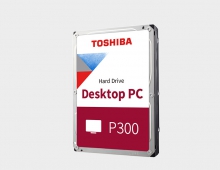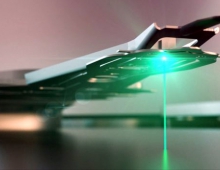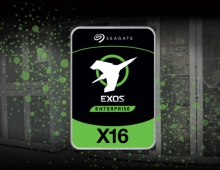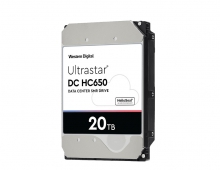
HItachi HDD Technology Enables Recording Density Of 3 Tbits Per Squre Inch
have jointly developed basic technologies for microwave magnetic recording which are expected to dramatically expand the recording density of HDD and validate magnetic recording experimentally.
In microwave-assisted magnetic recording, a high-frequency magnetic field is applied to a microscopic region of a recording media in order to make the writing of magnetic information easy.
The New Energy and Industrial Technology Development Organization (NEDO), Japan's public management organization that promotes research and development on energy and environmental technologies, and Hitachi, have developed a magnetic head-mountable spin torque oscillator which can generate a high-frequency magnetic field. During testing of the new spin torque oscillator device, data writing of magnetic information onto recording media has been validated experimentally.
Although there have been several published reports related to the effects of microwave assist using an external microwave generator, the verification of magnetic data rewriting using a magnetic head-mountable tiny oscillator at this time indicates that practical use of microwave-assisted recording can be expected in the near future. Nedo and Hitachi confirmed through computer simulation that a recording density of 3 Tbits/inch2 on a hard disk drive is feasible.
Background
Hard disk drives (HDD) have become a crucial component for an information society. For this reason, technology to increase the density and capacity of HDD has received much attention as a means of developing energy-saving IT equipment and realizing an environment-friendly society.
In recent years, the development of microwave-assisted recording which utilizes a recording density of 1 Tbit/inch2 or more is advancing as a next-generation perpendicular magnetic recording technology. Microwave-assisted recording is a magnetic recording system which uses the magnetic resonant effect to ease the local reversal of recording media magnetization.
Until recently, the principles and effects of microwave-assisted recording were demonstrated only through computer simulation, although there have been some reports that verified the reversal of magnetization of magnetic materials by applying a microwave generated from external equipment. However, in order for this to become practical, the microwave device must be miniaturized so that it can be integrated on the writing head.
During NEDO?s project, Hitachi, Ltd. developed a spin torque oscillator capable of generating a high frequency magnetic field with a sufficient amount of power to reverse the magnetization of media. Using this device together with perpendicular magnetic recording media, magnetization reversal was verified.
Spin torque oscillation device for generating a high-frequency field An electric current flow across a magnetic multilayer composed of a free magnetic layer and fixed magnetization direction layers results in a polarized electronic spin flow from the fixed layer to the free layer. Under suitable conditions, the magnetization of the free layer turns simultaneously due to the generated torque from the spin flow. This phenomenon is called spin torque oscillation, which is when the high frequency magnetic field for assisted recording is emitted from the free layer. High frequency oscillation in the 10 GHz range was confirmed using the developed spin torque oscillator.
In microwave-assisted recording, a weak magnetic field can reverse the magnetization of recording media by means of the assistive effects of a high frequency magnetic field. Using a combination of the developed spin torque oscillator and perpendicular magnetic recording media, it was confirmed that magnetization inversion of the recording media occurred just under the oscillator. The confirmation was performed using the spin torque oscillation device close to the recording media while applying a weak magnet field to the recording media without magnetization inversion.
The research results show that microwave-assisted recording is a feasible technology both in principle as well as experimentally. In addition, by using microwave-assisted recording, it was confirmed through computer simulation that a recording density of 3 Tbits/inch2 is feasible.
The New Energy and Industrial Technology Development Organization (NEDO), Japan's public management organization that promotes research and development on energy and environmental technologies, and Hitachi, have developed a magnetic head-mountable spin torque oscillator which can generate a high-frequency magnetic field. During testing of the new spin torque oscillator device, data writing of magnetic information onto recording media has been validated experimentally.
Although there have been several published reports related to the effects of microwave assist using an external microwave generator, the verification of magnetic data rewriting using a magnetic head-mountable tiny oscillator at this time indicates that practical use of microwave-assisted recording can be expected in the near future. Nedo and Hitachi confirmed through computer simulation that a recording density of 3 Tbits/inch2 on a hard disk drive is feasible.
Background
Hard disk drives (HDD) have become a crucial component for an information society. For this reason, technology to increase the density and capacity of HDD has received much attention as a means of developing energy-saving IT equipment and realizing an environment-friendly society.
In recent years, the development of microwave-assisted recording which utilizes a recording density of 1 Tbit/inch2 or more is advancing as a next-generation perpendicular magnetic recording technology. Microwave-assisted recording is a magnetic recording system which uses the magnetic resonant effect to ease the local reversal of recording media magnetization.
Until recently, the principles and effects of microwave-assisted recording were demonstrated only through computer simulation, although there have been some reports that verified the reversal of magnetization of magnetic materials by applying a microwave generated from external equipment. However, in order for this to become practical, the microwave device must be miniaturized so that it can be integrated on the writing head.
During NEDO?s project, Hitachi, Ltd. developed a spin torque oscillator capable of generating a high frequency magnetic field with a sufficient amount of power to reverse the magnetization of media. Using this device together with perpendicular magnetic recording media, magnetization reversal was verified.
Spin torque oscillation device for generating a high-frequency field An electric current flow across a magnetic multilayer composed of a free magnetic layer and fixed magnetization direction layers results in a polarized electronic spin flow from the fixed layer to the free layer. Under suitable conditions, the magnetization of the free layer turns simultaneously due to the generated torque from the spin flow. This phenomenon is called spin torque oscillation, which is when the high frequency magnetic field for assisted recording is emitted from the free layer. High frequency oscillation in the 10 GHz range was confirmed using the developed spin torque oscillator.
In microwave-assisted recording, a weak magnetic field can reverse the magnetization of recording media by means of the assistive effects of a high frequency magnetic field. Using a combination of the developed spin torque oscillator and perpendicular magnetic recording media, it was confirmed that magnetization inversion of the recording media occurred just under the oscillator. The confirmation was performed using the spin torque oscillation device close to the recording media while applying a weak magnet field to the recording media without magnetization inversion.
The research results show that microwave-assisted recording is a feasible technology both in principle as well as experimentally. In addition, by using microwave-assisted recording, it was confirmed through computer simulation that a recording density of 3 Tbits/inch2 is feasible.





















